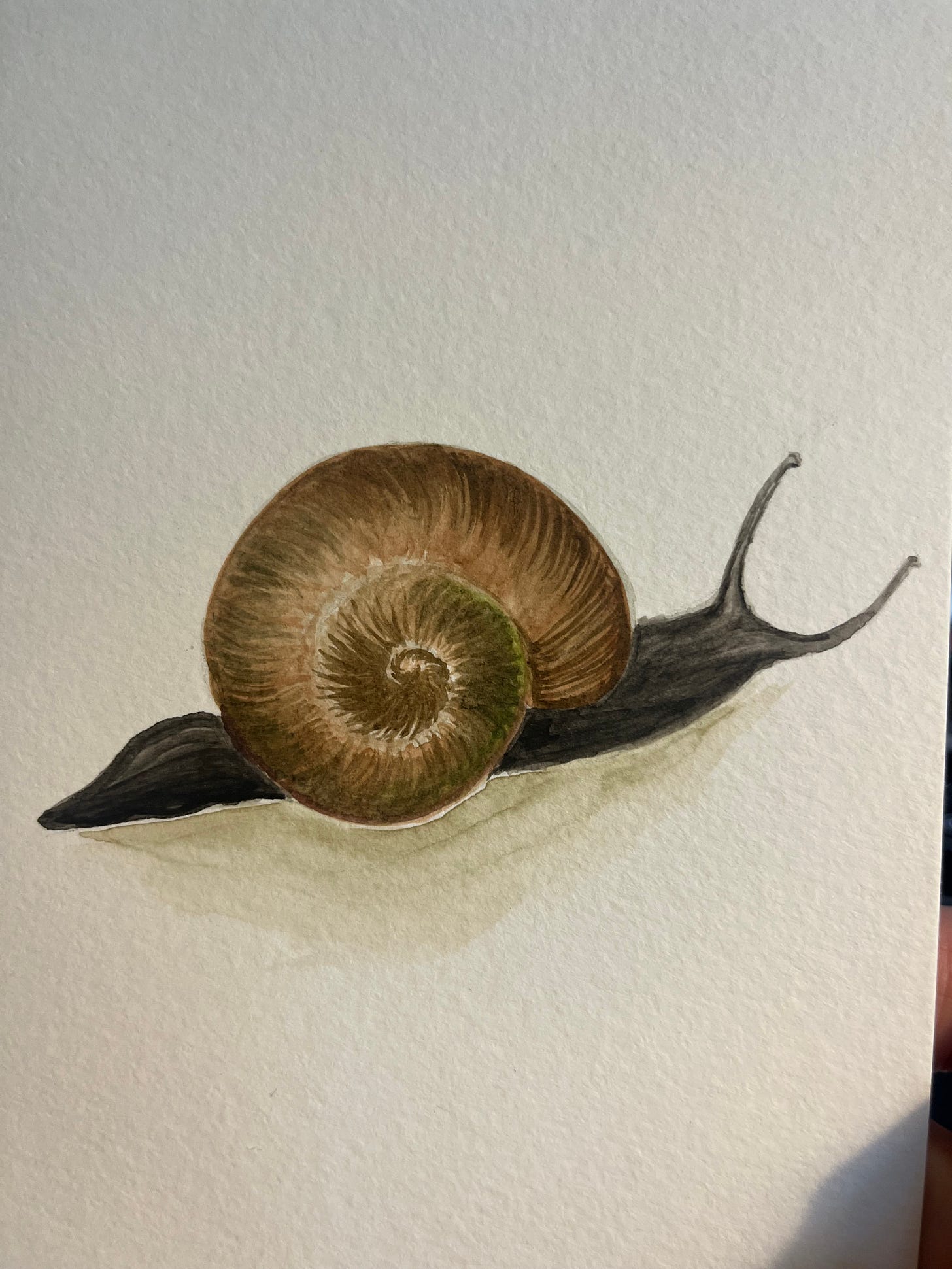I saw this image, of the beautiful pattern found in a bisected red cabbage, on SubStack the other day… I wish I could remember who posted it (took a hasty screenshot at the time, was on a subway!)…
The only part of mathematics I ever found even the slightest bit engaging as a student was fractals—something that we touched on only briefly, I think, in geometry.
In my memory, fractals are patterns that occur in nature—the seemingly uncanny symmetry found in things like leaves and mountain peaks and snowflakes. I just googled for a refresher, and see that “a fractal is a never-ending pattern. Fractals are infinitely complex patterns that are self-similar across different scales. They are created by repeating a simple process over and over in an ongoing feedback loop. Driven by recursion, fractals are images of dynamic systems – the pictures of Chaos.”
The mention of chaos is surprising to me. Patterns in general seem orderly, organized—the opposite of chaos?
Reading on: “Geometrically, [fractals] exist in between our familiar dimensions. Fractal patterns are extremely familiar, since nature is full of fractals. For instance: trees, rivers, coastlines, mountains, clouds, seashells, hurricanes, etc.” How can fractals be “extremely familiar” and also “exist in between” the familiar? It’s something to do with chaos theory. Fascinating, confounding… If there are patterns in chaos, then… ? My brain hurts…
The initial info quoted here is courtesy of The Fractal Foundation out of Albuquerque, NM. Searching further (briefly), I’m intrigued to see additional links between fractals and chaos. Apparently, “there are several [scholarly] journals dedicated solely to the study of chaos.”
Whew. Went on a little tangent there— are there even such things as tangents? Or are they part of the ultimately connected pattern…?
I was intrigued by that image of the spiraling cabbage because I’m taken with the idea of moving beyond linear narrative and exploring new and different structures in my writing. I loved this gorgeous book by Jane Alison.
The idea that a story doesn’t need to follow the familiar rising arc to climax to denouement isn’t new, but is nonetheless exciting to me, resonating deeply with me in this moment.
“There are rings within rings within rings” as Bon Iver sings on the beautiful new album SABLE, fABLE.
Red wolves: Per the guidelines I myself made for this newsletter, I’m supposed to be writing about them here, and I will be again soon — and in truth, everything I think about and write about in this space has to do with them, with the ongoing story of the attempted recovery of a critically endangered species.
At this moment I am contemplating, I am healing, I am preparing, I am regaining strength. Clarissa Pinkola Estes again: “…the doors to the world of Wild Woman are few but precious. If you have a deep scar, that is a door, if you have an old, old story, that is a door. If you love the sky and the water so much you almost cannot bear it, that is a door. If you yearn for a deeper life, a full life, a sane life, that is a door.”
A spiral pattern found in nature.
When my father died, a friend sent this snail card with a note saying she had a “tough as snails” sticker on a water bottle, and the beautiful message: I love them for their self-reliance (diy house!) and the fact that they seem hardy and vulnerable at the same time, I think grief is kind of like a snail—curled up in its shell or creeping out in your path—both suddenly and without warning.
Spirals are everywhere, from a tiny snail’s shell to the whorls of distant galaxies. (I love the word whorl—which means a pattern of spirals or concentric circles!)
My whole family was wowed recently by a visit to the American Museum of Natural History in NYC (what a museum! what a city!) and especially its planetarium film “Passport to the Universe,” which speaks to the fundamental realization “that we are not the center of the universe, that we are part of something larger than ourselves.”
I have more to write about museums—and about the fundamental and crucial work being done at museums and by artists and intellectuals and conservationists… but I have a summer cold, so I’m keeping this entry short. (Short is good, right? People don’t read anymore, isn’t that what people say? Oops, went dark for a second… okay now I’m back. This happens countless times a day).
There’s a bird on a nest outside my office window, built into the curve of a gutter pipe. I find myself wondering how we might keep its eggs safe from squirrels, from roving neighbor cats, from the huge, possibly pregnant possum we’ve spotted in and around our yard on numerous occasions recently.
Speaking of spirals and of cycles… here is footage of the great sandhill crane migration in Nebraska. I saw something about there being record-breaking numbers this year. I saw them pass over, far above me, when I stepped out from the room where my father was dying and into a cold Illinois parking lot last November. Migrations, the seasonal movement of creatures from one habitat to another. During each phase of a migration, a bird (for example) may have different habitats, different needs… and while one individual might not make the same journey each season, the same thing happens with subsequent generations, again and again and again…








